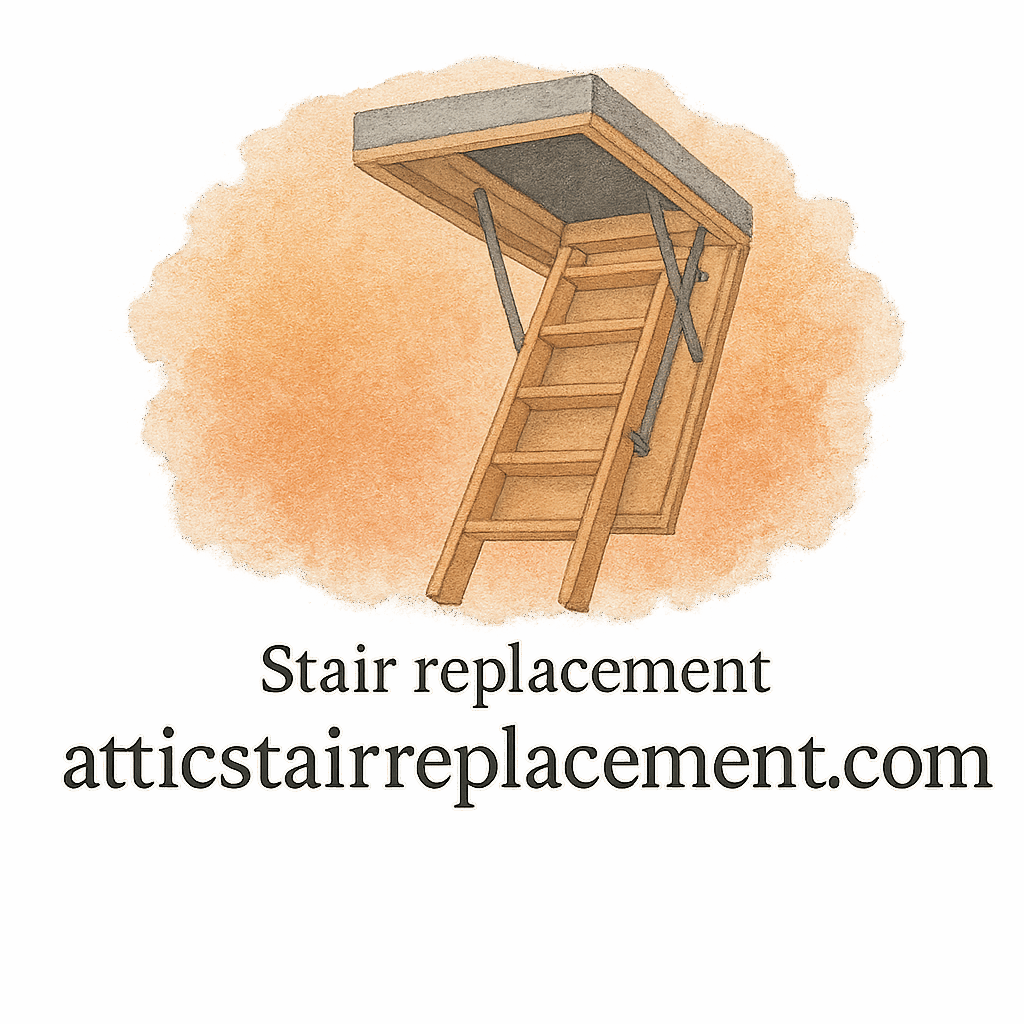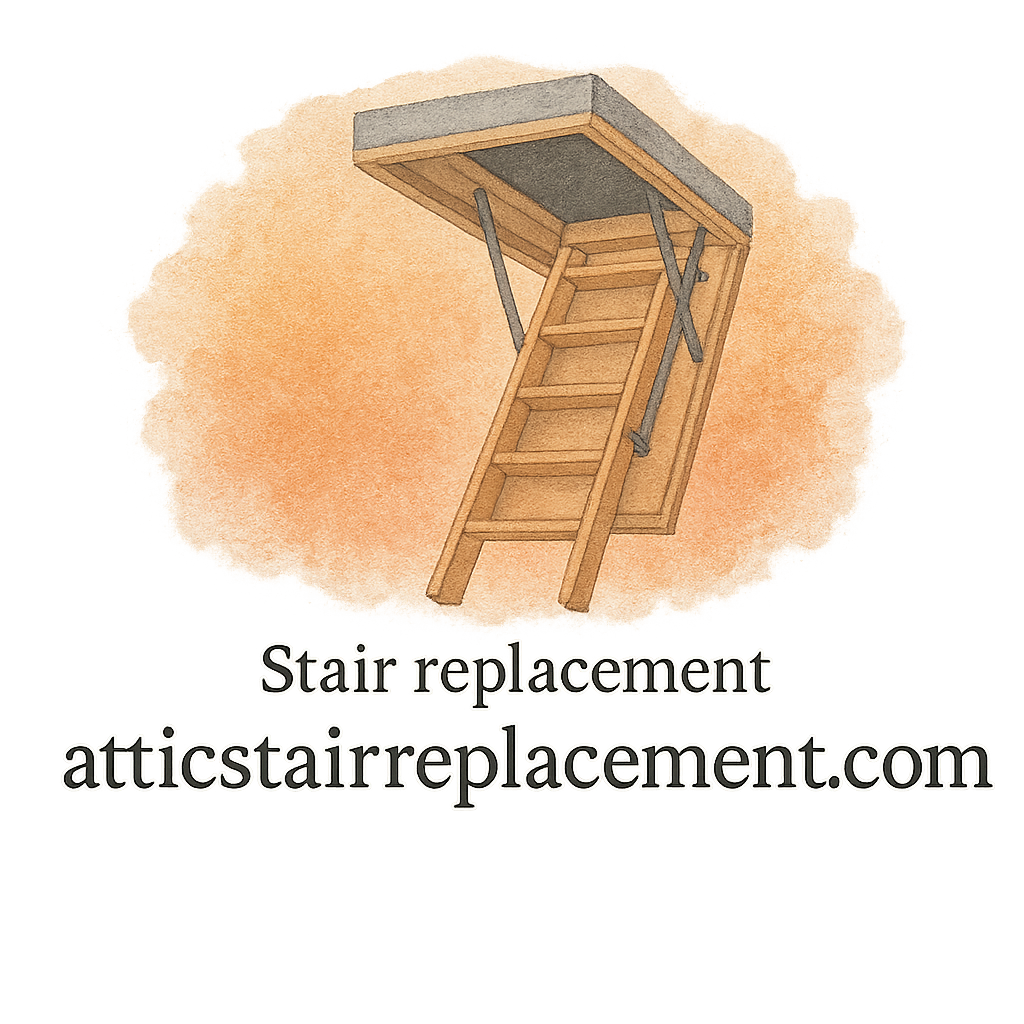Introduction
Thinking about replacing your attic stairs? You’re not alone. Many homeowners realize their old attic ladder is shaky, outdated, or just not safe anymore. But here’s the thing—attic stair replacement doesn’t have to be a stressful home project. With the right preparation, tools, and know-how, you can handle the installation smoothly, save money, and end up with a safer, more functional access point to your attic.
In this guide, I’ll walk you through 12 essential tips for smooth attic stair replacement installation, plus cover some common mistakes, DIY vs. contractor considerations, and maintenance tricks to keep your new stairs in great shape.
Why Attic Stair Replacement Matters
Safety Concerns with Old Attic Stairs
Let’s be honest: old attic stairs can be downright dangerous. Weak steps, loose hinges, or poor balance can lead to falls and injuries. Replacing them is about more than convenience—it’s about protecting your family.
Boosting Home Value and Functionality
A sturdy, modern attic ladder not only makes accessing your storage easier but also boosts your home’s functionality and resale appeal. Potential buyers love the idea of safe, practical attic access.
Preparing for Attic Stair Replacement
Measure Twice, Cut Once
The golden rule of carpentry applies here. Measure your attic opening, ceiling height, and floor clearance accurately. A tiny error can mean hours of frustration or even having to start over.
Choosing the Right Attic Ladder Material
Wood, aluminum, or steel? Each has pros and cons:
- Wood feels classic but can warp if not cared for.
- Aluminum is lightweight and rust-resistant.
- Steel is heavy-duty and ultra-durable.
Budgeting for the Project
Factor in the cost of the ladder, tools, possible repairs, and even extra insulation around the frame. Always budget for at least 10–15% more than you expect.
12 Tips for Smooth Attic Stair Replacement Installation
1. Evaluate the Existing Staircase Condition
Before ripping out your old stairs, check their condition. Some parts may be salvageable, but often, it’s safer to start fresh.
2. Select the Right Type of Attic Ladder
Folding Ladders
Compact and popular for smaller spaces.
Telescoping Ladders
Great for tight spots, these extend and collapse smoothly.
Heavy-Duty Options
If you’re storing heavy boxes or equipment, go with a heavy-duty model for extra strength.
3. Gather the Proper Tools Before Starting
Nothing kills momentum like running to the hardware store mid-project. Prepare drills, levels, wrenches, saws, and safety gear ahead of time.
4. Get a Helping Hand for Safety
Attic ladders are bulky and awkward. Having at least one helper makes installation smoother and safer.

5. Follow Manufacturer Instructions Closely
Each attic ladder has its quirks. Don’t rely on guesswork—manufacturer instructions are your best friend.
6. Ensure Correct Alignment of the Frame
A misaligned frame causes sticking, wobbling, and unsafe steps. Double-check with a carpenter’s level before tightening screws.
7. Reinforce for Extra Durability
Even if your attic ladder seems stable, adding reinforcement brackets or screws can extend its lifespan and strength.
8. Test the Ladder Before Finalizing
Open and close it several times before securing everything. This helps catch any alignment or stability issues.
9. Secure the Hatch Door Properly
A poorly attached hatch can slam unexpectedly or fail to insulate. Make sure it opens smoothly and latches securely.
10. Seal Around the Frame to Prevent Air Leaks
Gaps around your ladder frame can leak heat in winter and cool air in summer. Use foam sealant or weatherstripping for efficiency.
11. Regular Maintenance After Installation
Check hinges, springs, and screws at least twice a year. Regular care prevents costly repairs later.
12. Know When to Call a Professional
If your ceiling joists are tricky, or you’re not comfortable handling structural modifications, it’s better to bring in a pro.
Common Mistakes to Avoid During Installation
Ignoring Ceiling Height Measurements
Picking a ladder that’s too short or too long is one of the most frustrating mistakes.
Skipping Safety Gear
Always use gloves, goggles, and sturdy shoes. One slip can ruin your project—and your day.
Overlooking Hidden Costs
Things like insulation, finishing trim, or unexpected repairs can add up. Budget smartly to avoid surprises.
DIY vs. Hiring a Contractor
Benefits of a DIY Approach
DIY attic stair replacement saves labor costs and gives you bragging rights. Plus, you can learn new skills along the way. Check out this DIY installation guide for step-by-step help.
When Expert Help is Worth It
Some jobs require precision. If you’re unsure about structural integrity, an expert contractor can ensure safety and quality.
Maintenance and Long-Term Care
Lubricating Moving Parts
Apply lubricant to hinges and springs regularly for smooth operation.
Checking for Loose Screws and Bolts
Even the best ladders loosen with use. Tighten all connections twice a year.
Preventing Wood Damage
If you chose wood, seal it against moisture to prevent warping and cracking.
For more guidance, see our maintenance and repair tips.
Final Thoughts
Replacing your attic stairs might seem intimidating at first, but with careful planning and these 12 tips, you’ll be surprised at how manageable it is. From choosing the right ladder type to sealing for energy efficiency, every step matters in creating a safe, durable, and user-friendly attic access.
Whether you tackle this as a DIY home project or hire a contractor, remember—smooth attic stair replacement is about preparation, precision, and patience.
FAQs
1. How long does attic stair replacement usually take?
Most DIY installations take 3–5 hours, depending on skill and preparation.
2. Can I replace attic stairs on my own?
Yes, but it’s safer with a helper. For complex jobs, consider hiring an expert.
3. What type of attic ladder is best?
It depends—folding for small spaces, telescoping for convenience, and heavy-duty for frequent use.
4. How much does attic stair replacement cost?
Anywhere from $200–$800 depending on ladder type, tools, and whether you DIY or hire help.
5. How often should attic stairs be maintained?
Check them at least twice a year for loose bolts, squeaks, or wear.
6. Do attic stairs affect home insulation?
Yes, if not sealed properly. Use weatherstripping to prevent air leaks.
7. Where can I find product reviews for attic stairs?
Check out our detailed product reviews for comparisons and expert insights.


